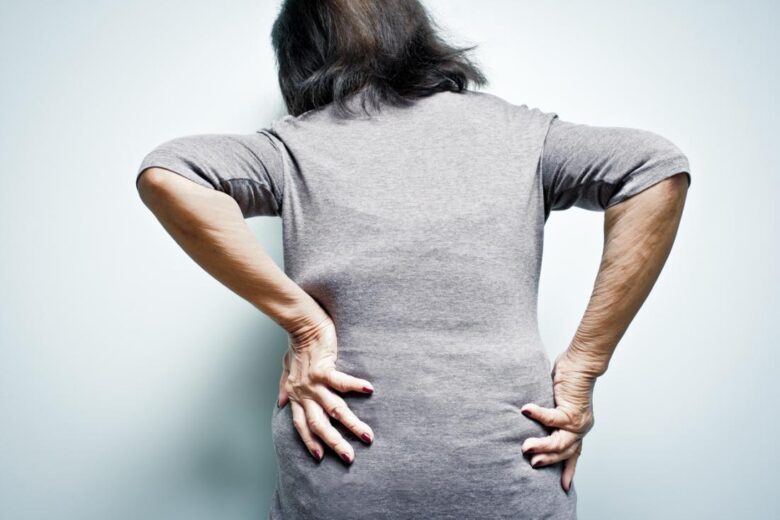Back pain is something we all deal with from time to time to time. It’s caused by a litany of different issues, and yet that pain can be so debilitating, halting us in our tracks from doing what we want to do in our lives.
The types of back pain are also diverse. From sharp lower back pain to pains in the upper back, these pains can also spread into your neck, shoulders, or legs. When the pain starts spreading, it can shut down a person’s ability to function normally. Some symptoms of back pain include:
• Severe pain in the back area, especially when standing or sitting for long
• Burning back pain sensation experienced when lifting items
• Stabbing sensation through the back area when bending
• Trouble standing straight that may be accompanied by muscle spasms and sharp pains
• Pain that radiates through the leg area when walking
• Stiffness in the back area
• Localized sharp pains in the disc’s connection points of your spine
• Pain in the shoulder area and the upper back parts, mostly felt when twisting or turning
• Back pain that seems to move from the back area and down to the legs
No matter your symptoms, there’s a good chance that your pain is rooted in a common cause and can be treated effectively. To do that, however, requires an understanding of how these pains to form and what you can do to stop them.
Causes of back pain

Back pains range from mild to sharp, painful sensations that may make it impossible for you to carry out normal functions. Back pain causes may be self-induced or medically oriented. Some causes of back pain include;
1. Wrong posture
Wrong posture is likely to cause back pain, especially when done repeatedly or for a long time. For example, having an improper posture at work is expected to leave your back sore and cause mild pain. However, if repeatedly done over an extended period, the problem is likely to be constant and more intense.
2. Muscle or ligament strain
Muscle strains occur from the constant lifting and moving of heavy objects that cause pressure on your back. Repeated involvement of heavy weight lifting, gymnastics, or rigorous sporting exercises can place a strain on your back leading to ligament strain.
3. Arthritis

Arthritis affects the joints and causes stiffness. It also leads to severe back pain and is one of the leading causes of back pain. The disease weakens the joints and bones, making them painful and stiff. It affects the lower back area, making it hard for a person to carry out typical day-to-day activities like walking.
4. Ruptured disks
Disks are ligaments found in the spine area that cushion the bones. The disks enable proper movement and flexibility of the spine, walking, sitting, bending, or twisting. A bulged disk, thus presses on the nerves in the back area, leading to back pain. Bulged disks can be mild or painful and should be checked by a bone specialist, as it may lead to further damage.
5. Sciatica
Sciatica is a condition characterized by nerve irritations. The infection causes numbness and a tingling feeling in the lower back area and transverse the buttocks and leg area. Sciatica can also cause sharp pains and muscle spasms, leading to severe back pains.
6. Degenerative discs
Degenerative discs are a condition that occurs as one gets older. It is caused by the discs shortening or shrinking in size, making bones in the spine area to rub against each other. Degenerative discs can be hereditary, affecting younger people, and is characterized by excessive back pain when carrying out everyday activities like bending or stretching.
7. Spinal stenosis

The disease affects older people, characterized by the narrowness of the spinal canal. A narrow spine makes it hard for the bones and nerves to function correctly, adding pressure that leads to numbness in the leg and shoulder area. It thus makes walking hard and painful or leads to moving with a bent posture.
8. Accidents or injuries
Accidents can cause sudden impacts that shift discs’ position or cause excessive pressure to the spinal cord, weakening it. A weakened spinal cord is dangerous and may lead to severe back pain and the inability to walk. Injuries caused by excessive workouts or accidents may also make your back stiff and make it hard to move naturally.
Remedies for back pain
Depending on the severeness of the back pain, some may get treated by a change of lifestyle. In contrast, others require medical interventions that range from treatment, therapy, and in some instances, surgery may be necessary to fix the damage. The remedies include;
1. Over the counter pain relievers

Pain relievers are prescribed by doctors to treat mild back pains. These medications should be taken in strict adherence to the authorized prescription to prevent further damage due to overuse and dependency.
2. Topical pain remedies
These are medications applied to the skin that treat pain by soothing nerves and relieving the spine’s vibration. They come in the forms of creams, oils, sprays, and ointments and are applied to specific painful areas then massaged into the skin to relieve pressure. You may feel a burning sensation when used, but this is the medication getting into your system and should not be a cause of alarm unless the feeling persists. It would be best if you also considered speaking to your doctor, as it may be an allergic reaction.
A company like ScripHessco supplies all of these items, as well as postural supports to provide relief.
3. Back exercises and stretches
Carrying out exercises and staying active is a proper way to get rid of back pains. The activities enable your back to get stronger and eliminate pain. Doing activities such as stretching, swimming, or jogging is likely to correct any mild back pain. Performing a butterfly stretch is especially beneficial for your overall posture, lower back, and hips. It’s a very easy exercise to do as explained in this Protalus article. However, if you are unsure of the back exercises due to underlying conditions, enlist a physical therapist or general practitioner who will guide you.
4. Surgery

Having corrective procedures can eliminate or alleviate back pains. Surgery is usually the last resort but may be useful. Advanced technology has introduced artificial discs that release pressure from the spine, eliminating back pains.
5. Self-care
Self-care is the most excellent defense against severe back pains. Understand your body and notice when you are pushing yourself too hard. Practice proper sitting position to ensure you do not weaken your back. Take care of yourself by scheduling regular body massages and ensure you do not continually lift heavy objects. If your work entails frequent lifting of objects, ensure you lift them properly and take breaks to rest to eliminate pressure from your back.
Back pain can cause several health issues. You need to take extra care of your backbone. If you have any issue with your back, consult with the best orthopedic surgeon for lower back pain. Visit Marham to consult with the doctors for lower back pain in your area.
Conclusion
Back pains are uncomfortable and may cause severe pain to the person. If you carry out self-care activities and the problem does not stop, ensure you visit a doctor for a proper diagnosis to avoid severe damage. It is always essential to ensure you do not overwork. However, involving yourself in activities that keep you active as a lack of exercise may also weaken the spine, making you prone to back pains.


